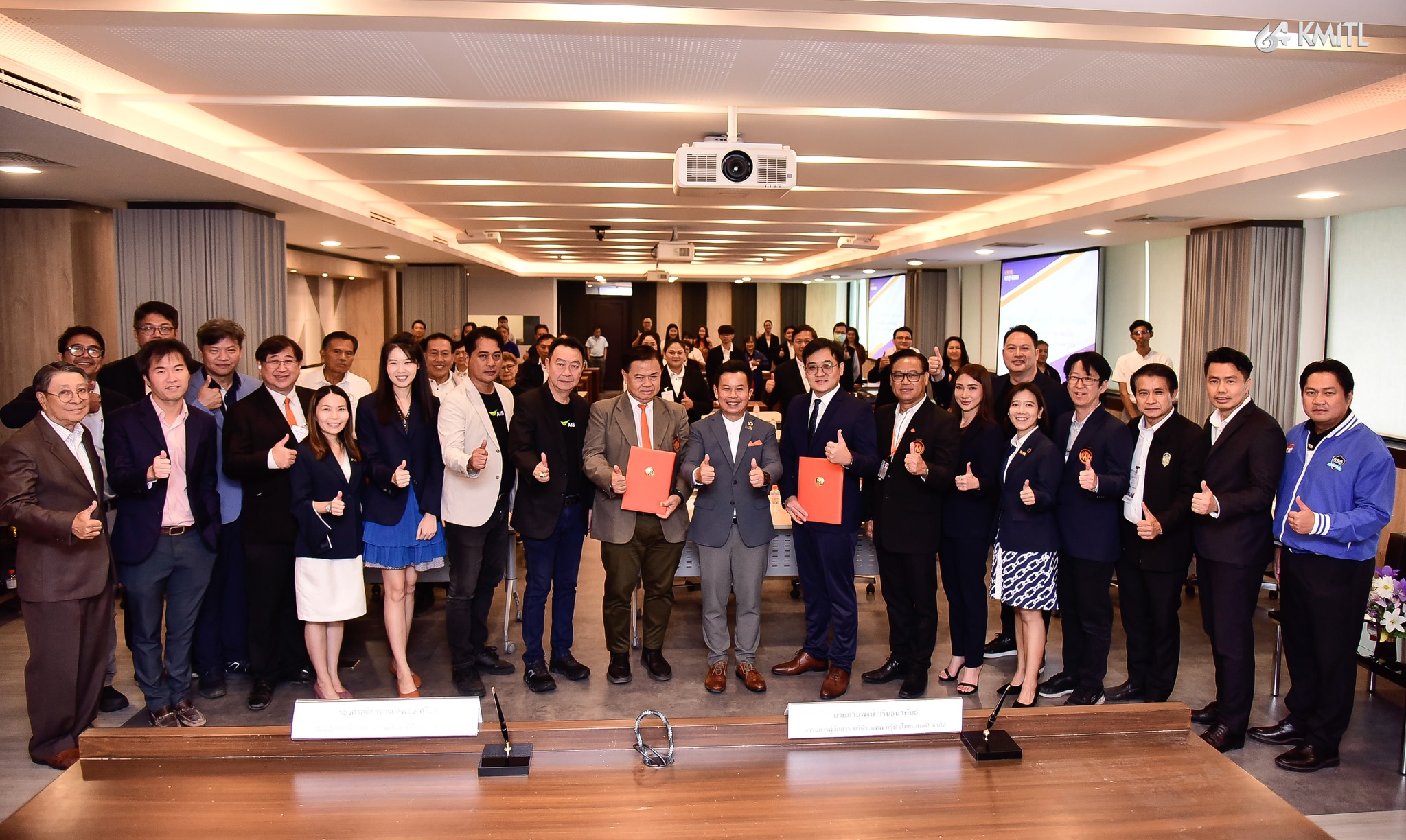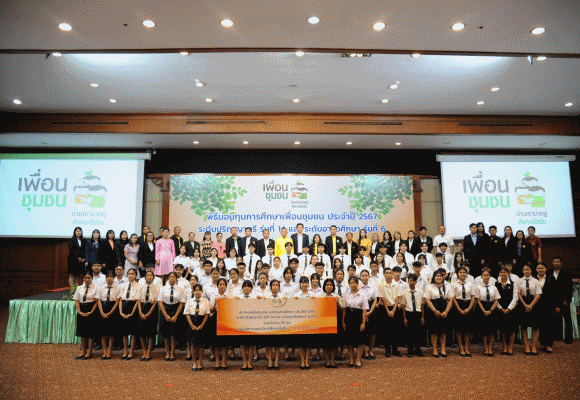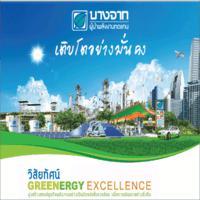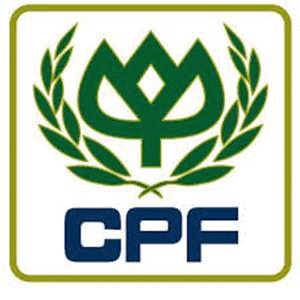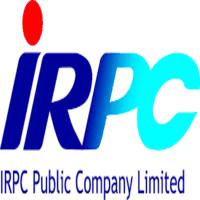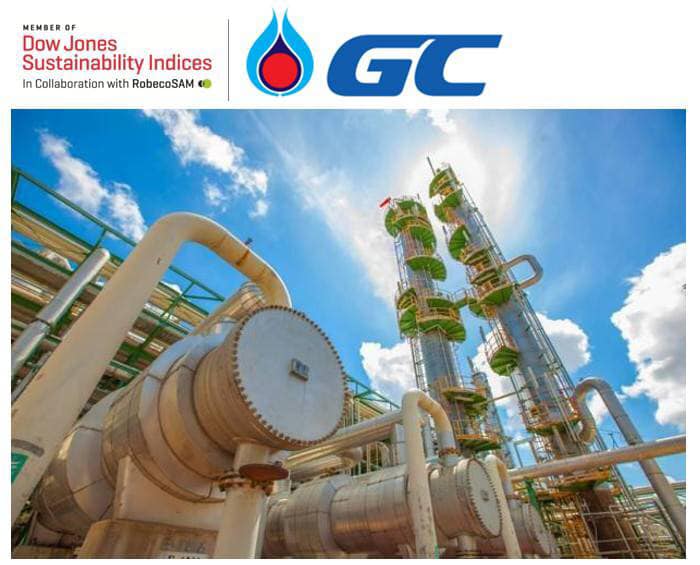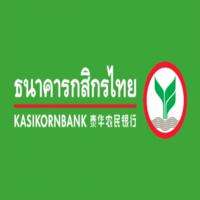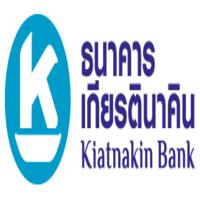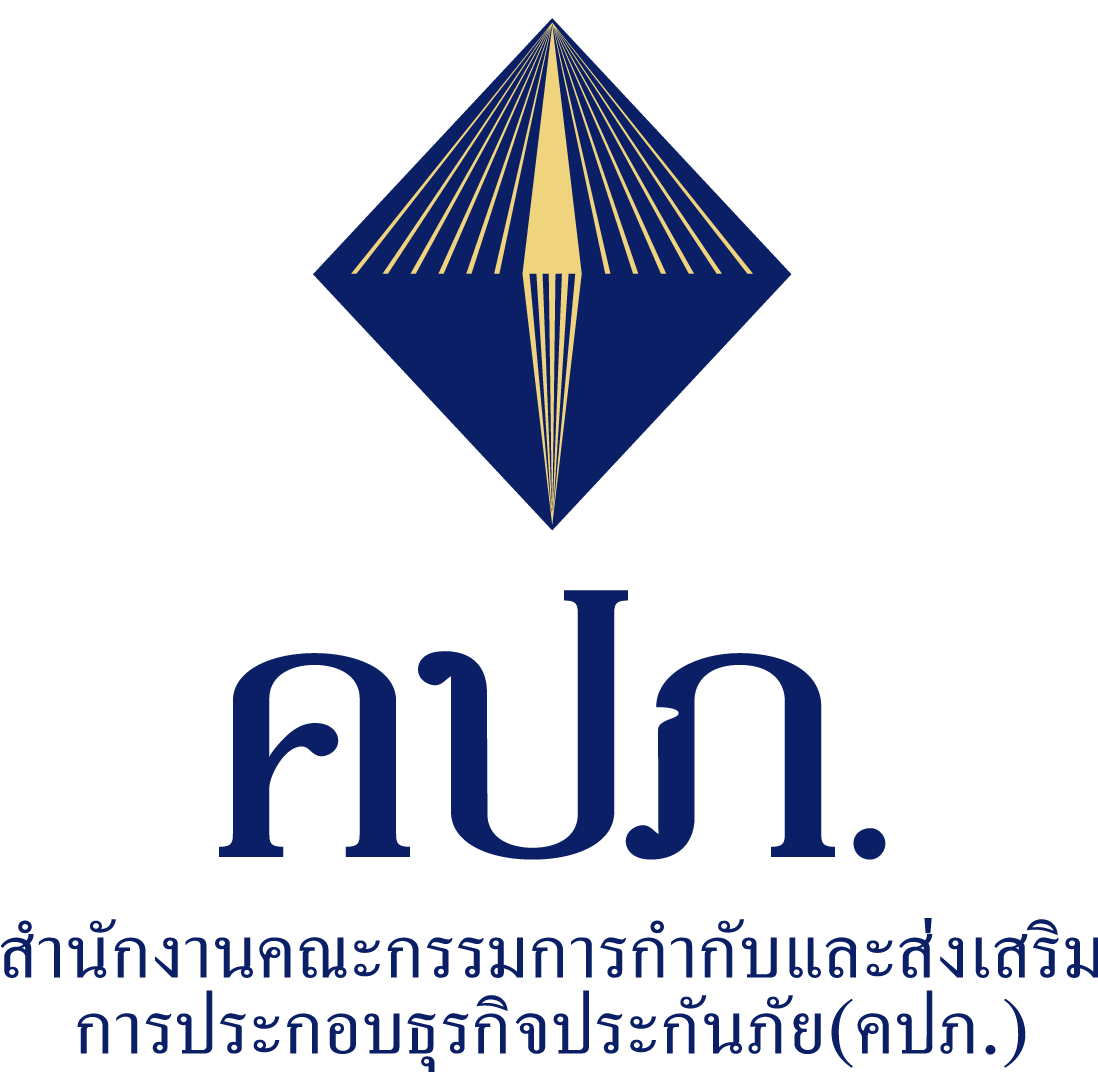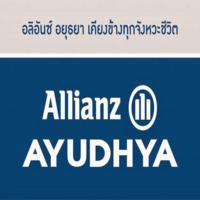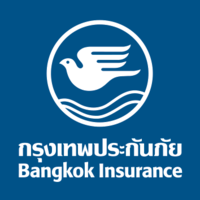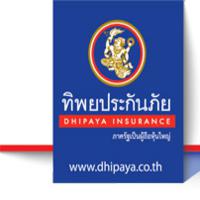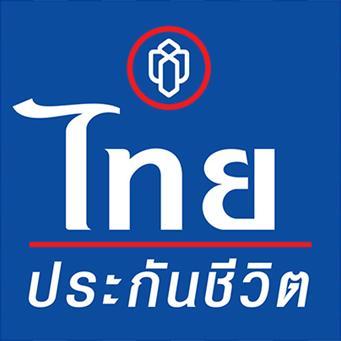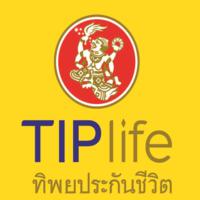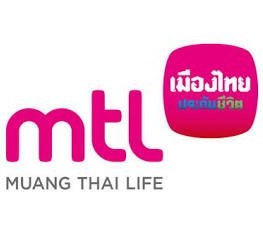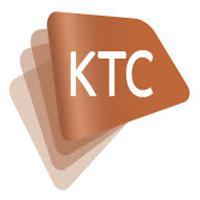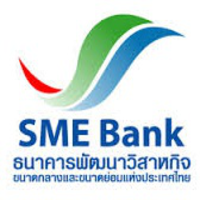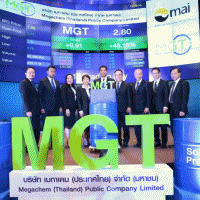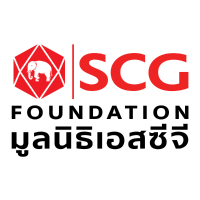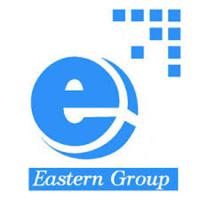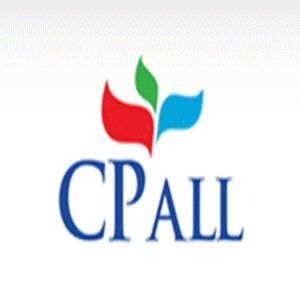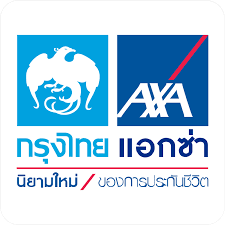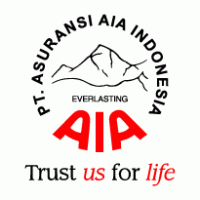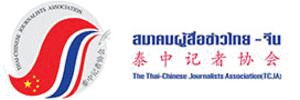- Details
- Category: แบงก์พาณิชย์
- Published: Thursday, 16 August 2018 18:43
- Hits: 5285
 KTC กำไรสุทธิโตแรง 66% ครึ่งปีแรก 2,515 ล้านบาท มุ่งรักษาพอร์ตลูกหนี้คุณภาพ พร้อมรับทุกสถานการณ์
KTC กำไรสุทธิโตแรง 66% ครึ่งปีแรก 2,515 ล้านบาท มุ่งรักษาพอร์ตลูกหนี้คุณภาพ พร้อมรับทุกสถานการณ์
เคทีซี แจ้งผลการดำเนินงานครึ่งปีแรก 2561 กำไรสุทธิ 2,515 ล้านบาท เติบโตต่อเนื่องถึง 66% จากรายได้ที่มาจากฐานของพอร์ต ธุรกรรมการออกบัตรและร้านค้า ควบคู่กับการควบคุมค่าใช้จ่ายให้ลดลง มุ่งรักษาพอร์ตคุณภาพและการบริหารติดตามหนี้ ทำให้หนี้สูญและหนี้สงสัยจะสูญรวมลดลง รวมทั้งมีรายได้หนี้สูญได้รับคืนเพิ่มขึ้น ในช่วงครึ่งปีหลังบริษัทฯ จะรุกธุรกิจโดยมุ่งหมายที่ความต้องการของผู้บริโภคเป็นหลัก (Customer Needs) พร้อมขยายความร่วมมือกับทุกพันธมิตรธุรกิจ พัฒนาบุคลากรและองค์กร โดยมีเทคโนโลยีเป็นตัวช่วยในการสร้างสรรค์บริการใหม่ๆ รวมถึงพัฒนาแอปพลิเคชัน 'TapKTC’ เพื่ออำนวยความสะดวกและสร้างประสบการณ์ที่ดีให้กับสมาชิกต่อเนื่อง
นายระเฑียร ศรีมงคล ประธานเจ้าหน้าที่บริหาร “เคทีซี” หรือ บริษัท บัตรกรุงไทย จำกัด (มหาชน) กล่าวว่า “เศรษฐกิจไทยมีแนวโน้มขยายตัวชัดเจนต่อเนื่อง จากการผลักดันภาคการส่งออกสินค้าและการท่องเที่ยวที่ปรับตัวดีขึ้นตามการขยายตัวของเศรษฐกิจ พร้อมทั้งแรงขับเคลื่อนจากอุปสงค์ในประเทศ สำหรับภาพรวมของอุตสาหกรรมสินเชื่อเพื่อผู้บริโภคในช่วงครึ่งปีแรกนี้ มีอัตราเติบโตสูงขึ้น จากลูกหนี้บัตรเครดิตรวมและปริมาณการใช้จ่ายผ่านบัตรที่เพิ่มขึ้น”
“ในส่วนของเคทีซีถือว่ามีผลการดำเนินงานที่ดีอย่างต่อเนื่อง โดยครึ่งปีแรกนี้สามารถทำกำไรสุทธิได้ถึง 2,515 ล้านบาท หรือมีอัตราเติบโตจากช่วงเดียวกันของปีก่อนถึง 66% ในขณะที่กำไรสุทธิในไตรมาส 2 เท่ากับ 1,306 ล้านบาท ท่ามกลางสภาวะการแข่งขันในธุรกิจสินเชื่อเพื่อผู้บริโภคที่ทวีความเข้มข้นขึ้นต่อเนื่อง ทั้งจากความท้าทายของพฤติกรรมผู้บริโภคที่เปลี่ยนไป และผลกระทบจากการพัฒนาด้านเทคโนโลยีที่รวดเร็ว บริษัทฯ จึงต้องปรับปรุงกระบวนการสื่อสารกับผู้บริโภคและพัฒนาตัวเองอยู่ตลอดเวลาให้ทันกับสภาพแวดล้อมที่เปลี่ยนแปลงอย่างรวดเร็ว ประกอบกับต้องปรับกลยุทธ์เพื่อเพิ่มจำนวนลูกค้าและเพิ่มปริมาณการใช้จ่ายผ่านบัตร เพื่อรองรับกับความท้าทายของมาตรการและกฎเกณฑ์ที่เกิดขึ้น”
“ข้อมูล ณ วันที่ 30 มิถุนายน 2561 เคทีซีมีสินทรัพย์รวมเท่ากับ 71,919 ล้านบาท เพิ่มขึ้น 9% จากช่วงเดียวกันของปีก่อนหน้า โดยสินทรัพย์ที่สร้างรายได้หลักให้กับบริษัทฯ อยู่ในรูปของลูกหนี้การค้าสุทธิ คิดเป็น 92% ของสินทรัพย์รวม โดยพอร์ตลูกหนี้การค้ารวมเท่ากับ 72,037 ล้านบาท ฐานสมาชิกรวม 3.1 ล้านบัญชี เติบโต 2.8% แบ่งเป็นบัตรเครดิต 2,249,933 บัตร ขยายตัว 3.2% พอร์ตลูกหนี้บัตรเครดิตรวม 46,251 ล้านบาท สัดส่วนของลูกหนี้บัตรเครดิตเทียบกับอุตสาหกรรมปัจจุบันอยู่ที่ 12.6% อัตราเติบโตการใช้จ่ายผ่านบัตรเครดิตเคทีซีรวมเท่ากับ 7.7% (อุตสาหกรรมเติบโต 11.9%) ส่วนแบ่งการตลาดของการใช้จ่ายผ่านบัตรเท่ากับ 11.1% เอ็นพีแอล (หนี้ที่ไม่ก่อให้เกิดรายได้ NPL) รวมของบริษัทยังลดต่ำลงอย่างต่อเนื่องอยู่ที่ 1.3% จาก 1.6% NPL บัตรเครดิตอยู่ที่ 1.1% ลดลงจาก 1.2% (อุตสาหกรรม 1.9%) สินเชื่อบุคคล 867,236 บัญชี ขยายตัว 2.0% ยอดลูกหนี้สินเชื่อบุคคลรวม 25,423 ล้านบาท สัดส่วนลูกหนี้สินเชื่อบุคคลเทียบกับอุตสาหกรรมเท่ากับ 7.0% และ NPL ของสินเชื่อบุคคลอยู่ที่ 0.8% ลดลงจาก 0.9% (อุตสาหกรรม 2.5%) โดยสัดส่วนค่าเผื่อหนี้สงสัยจะสูญต่อ NPL ยังคงมูลค่าสูงที่ 605% เมื่อเทียบกับช่วงเดียวกันของปีก่อนอยู่ที่ 528%”
“ไตรมาสสองของปี 2561 เคทีซีมีอัตราเติบโตของรายได้รวมสูงขึ้น และสามารถควบคุมค่าใช้จ่ายรวมให้มีอัตราลดลง โดยสามารถทำรายได้เพิ่มขึ้น 9% เท่ากับ 5,259 ล้านบาท จากรายได้ดอกเบี้ยซึ่งส่วนใหญ่เพิ่มจากลูกหนี้สินเชื่อบุคคลที่ยังเติบโตได้ดี (รวมรายได้ค่าธรรมเนียมในการใช้วงเงิน) รายได้ค่าธรรมเนียมและรายได้อื่นๆ ซึ่งมีสัดส่วน 93% มาจากหนี้สูญได้รับคืน และมีการควบคุมค่าใช้จ่ายรวมอยู่ที่ 3,626 ล้านบาท ลดลง 5% จากค่าใช้จ่ายการตลาดที่ลดลง เพราะอนุมัติสมาชิกใหม่ในจำนวนน้อยลงกว่าประมาณการที่ตั้งไว้ และมีการใช้งบประมาณด้านการตลาดที่มีประสิทธิภาพผ่านเทคโนโลยีมากขึ้น ทำให้ใช้จ่ายเม็ดเงินน้อยลง ในขณะที่มูลค่าหนี้สูญและหนี้สงสัยจะสูญลดลงเช่นกันเนื่องจากพอร์ตลูกหนี้ที่ขยายตัวได้ช้า ทำให้การตั้งสำรองและค่าใช้จ่ายการเงินที่เป็นต้นทุนเงินก็ลดลง เนื่องจากบริษัทฯ ออกหุ้นกู้ใหม่ในระยะเวลาที่ยาวขึ้นด้วยต้นทุนเงินที่ต่ำลงกว่าหุ้นกู้เดิม โดยรักษาสัดส่วนค่าใช้จ่ายดำเนินงานต่อรายได้สุทธิ (Operating Cost to Income Ratio) เท่ากับ 26.8% ลดลงจากช่วงระยะเวลาเดียวกันของปีก่อน ซึ่งอยู่ที่ 27.3% ซึ่งแสดงว่าบริษัทยังคงรักษาประสิทธิภาพในกระบวนการทำงานได้ดี”
“บริษัทฯ มีวงเงินสินเชื่อคงเหลือ (Available Credit Line) ทั้งสิ้น 24,890 ล้านบาท เป็นวงเงินของธนาคารกรุงไทย 18,030 ล้านบาท และธนาคารพาณิชย์อื่นๆ 6,860 ล้านบาท โดยมีต้นทุนการเงินไตรมาส 2/2561 เท่ากับ 2.99% ลดลง 3.23% หากเทียบจากช่วงเดียวกันของปี 2560 สำหรับครึ่งปีต้นทุนเงินอยู่ที่ 2.97% (สิ้นปี 2560 เท่ากับ 3.12%) เพราะบริษัทฯ จัดหาเงินจากการออกหุ้นกู้ใหม่ด้วยระยะเวลาที่ยาวขึ้น แต่มีต้นทุนเงินที่ต่ำกว่าหุ้นกู้เดิม โดยมีอัตราส่วนของหนี้สินต่อส่วนของผู้ถือหุ้นอยู่ที่ 4.24 เท่า ซึ่งต่ำกว่าภาระผูกพันที่กำหนดไว้ที่ 10 เท่า”
“แม้ว่า ในช่วงครึ่งปีแรกที่ผ่านมา บริษัทฯ จะไม่สามารถบรรลุเป้าหมายด้านอัตราเติบโตของพอร์ตและการใช้จ่ายผ่านบัตรตามที่ได้ตั้งไว้ จากปัจจัยของภาพรวมการเติบโตเศรษฐกิจที่อยู่ในสภาวะเริ่มฟื้นตัว และกฎเกณฑ์การควบคุมที่เป็นความท้าทายสำคัญ อย่างไรก็ตาม บริษัทฯ ได้ปรับกลยุทธ์ในหลายแนวทางเพื่อให้ธุรกิจแข่งขันได้ โดยในปี 2561 บริษัทฯ ยังคงประมาณการเป้าหมายพอร์ตลูกหนี้รวมธุรกิจบัตรเครดิตและสินเชื่อบุคคลเติบโตไว้ที่ 10% ปริมาณการใช้จ่ายผ่านบัตรรวมขยายตัวไม่ต่ำกว่า 15% รักษาสัดส่วน NPL ให้คงอยู่ในระดับเดียวกับปีก่อนที่ 1.3% และคาดว่าจะมีกำไรสูงกว่าปี 2560 ที่มีมูลค่า 3,304 ล้านบาท”
KTC’s net profit is on a 66 percent upswing, having generated 2.515 billion Baht
in the first six months of the year, with aims to maintain high quality portfolios to prime for any scenarios.
KTC announces Q2 2018 achievements, declaring a net profit of 2.515 billion Baht. Profits having grown consistently strong by 66 percent due to receivables, card issuance and merchant business transactions, along with lower expenses control growth. The firm aims to maintain high portfolios quality and debt collection management, to achieve an overall lower bad and doubtful debts, as well as increased recovery income. In the second half of the year, the firm is in full force to boost business, striving to prioritize customer needs. Also, expand collaboration with all business alliances, and develop personnel and the firm. Technologies are utilized as facilitators to execute new services and develop the “TapKTC” application to create convenience and great customer experiences on an ongoing basis.
Mr.Rathian Srimongkol, President and Chief Executive Officer of “KTC” or Krungthai Card Public Company Limited, states, “The Thai economy has demonstrated a clear indication of a positive and constant growth tendency due to increasing efforts in exports and tourism that have adjusted correspondingly to the growing economy and drives from domestic demand. In terms of the overview of the personal loans industry in the first half of the year, the industry indicates a growthas a result of surges in the number of overall credit card debtors and credit card spending.”
“Meanwhile, KTC’s overall operations continue to operate at a satisfactory level. The firm achieved 2.515 billion Baht in net profit, or a 66 percent boost compared to the previous year, while Q2 net profits equaled 1.306 billion Baht despite the intense competition within the personal loans industry, changing consumer spending behavior,and the effects caused by the rapid development of new technologies. In response to these factors, the firm had to improve its communication system with consumers, and periodically self-improve to better adapt to the ever so changing environment. Additionally, the firm also had to adjust its strategies to increase the number of clients and credit card spending value, in preparation of challenges that arose from rules and regulations that have been implemented.”
“As of June 30, 2018, KTC has a total asset value of Bt. 71.919 billion Baht, a 9 percent increase compared to the same period in the previous year. The assets that generated the most income for the firm is in the form of net trade receivables which comprise 92 percent of total assets. Total receivable was 72.037 billion Baht, member base numbered 3.1 million, or a 2.8 percent increase, comprising of 2,249,933 credit cards, a 3.2 percent surge. Total credit card receivable was 46.251 billion Baht. KTCcredit card receivables to the industry was at 12.6 percent. KTC credit card spending growth totaled 7.7 percent (industry grew 11.9) and credit card spendingmarket share totaled 11.1 percent. NPL (non-performing loan) continues to remain low from 1.6 to 1.3 percent. NPL for credit cards dropped from 1.2 percent to 1.1 percent (1.9 percent in the industry). Personal loans numbered 867,236 accounts, a 2.0 percent surge. Personal loans receivable amounted to 25.423 billion Baht, while KTC personal loans receivables compared to the industry totaled 7.0 percent, and NPL for the personal loans business totaled 0.8 percent, having dropped from 0.9 percent (2.5 percent in the industry) while coverage ratios remained at a high value of 605 percent compared to the same period last year which was at 528 percent.”
“In Q2 2018, KTC has a greater overall net revenue growth rate, and successfully controlled and reduced its overall expenses. KTC generated an increase in income of 9 percent, totaling Bt. 5.259 billion Baht from interest, mainly from personal loans account receivables, which has a positive growth momentum (including credit limit usage fees) and other income and fees that are comprised 93 percent by bad recovered debt, and net expenses control of Bt. 3.626 billion Baht, a 5 percent decrease from marketing expenses which dropped due to a decrease in new member approvals than estimated, and budgeting for marketing that has been undertaken more efficiently through technology, thereby causing lowered expenses. Simultaneously, bad and doubtful accounts have also decreased due to slower growth of the portfolio, which in effect causes loan loss reserves and capital financial expenses to decrease, as the firm launched new debentures with an extended time frame, and costs that are lower than that of the original. KTC additionally maintained its operating cost to income ratio at 26.8 percent, a decrease compared to the same period in the last year, an indication of the firm’s ability to uphold competent operational approaches.”
“The firm has an available credit line of Bt. 24.890 billion Baht, comprising of financial accounts of Bt. 18.030 billion Baht for Krung Thai Bank, and Bt. 6.860 billion Baht for other commercial banks. Financial costs for Q2/2018 totaled 2.99 percent, a decrease of 3.23 percent compared to the same period in 2017. In the first half of the year, the financial costs amounted 2.97 percent (3.12 percent at the end of 2017) due to the firm’s procurement through the launch of new debentures with extended periods with costs that are lower than original. At the same time, the firm’s debt to shareholder equity is 4.24, the ratio 10 times lower than the contingency agreement value.”
“Although the firm was not able to meet its receivables and credit card spending goal that was set in the first half of the year, as a consequence of the economy which is overall at the recovery stage and regulations that were set out that posed challenges, the firm had adjusted its various strategies for competitive advantage in the business. For 2018, KTC sets the same 10 percent increase receivables in both credit card and personal businesses, overall credit card spendingover than 15 percent, and will control the NPL ratio to remain the same value as last year which was 1.3 percent. A higher net profit which exceeds the 3.304 billion Baht value from last year is also expected.











